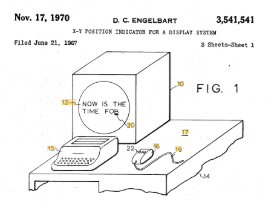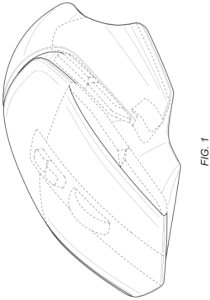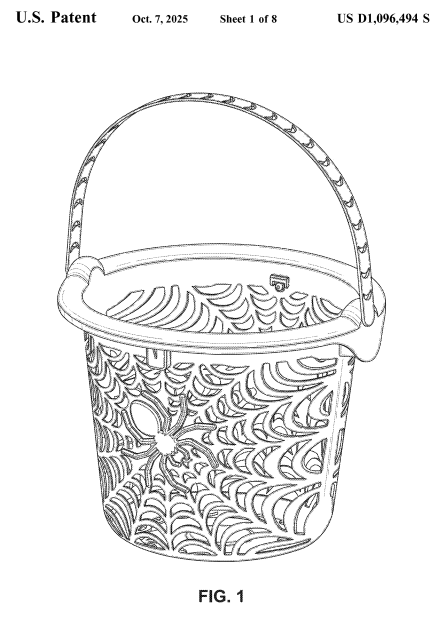Submitted by Tori Puoci
As a French horn player and someone who spends a significant amount of time on the computer, I was delighted to see a familiar aesthetic applied to an often forgettable tool. And of course, being in the field of Intellectual Property, I wondered what functional innovations might accompany or be demanded by this new design. How does the Mouse MI design, presented by Yamaha, change the traditional computer mouse design, and how does that design change affect its function?

Mouse MI (2022)
The “Yamaha” brand is shared by the Yamaha Corporation, which focuses on musical instruments, and Yamaha Motor Co., Ltd., which produces motorcycles and other recreational vehicles. Mouse MI was designed as a collaboration between Yamaha and Yamaha Motor that aimed to give a sense of the design style of the Yamaha brand. The collaboration also spawned Mouse MC, which has a frame structure like a motorcycle.
Aside from drawing obvious visual inspiration from wind instruments, Mouse MI further includes piston-like valves that provide tactile sensation of a click. Physical dial knobs can be used for adjusting operations such as “mouse pointer speed, number of scrolls, click intervals, and other functions originally sent through the OS of the PC”. The shape of Mouse MI merges instrumental and electronic designs as well, and was “created as a result of trying to express the flow of electrons on a printed circuit board in a way that can be felt visually”. Read more about the Mouse MI and Mouse MC here: https://www.yamaha.com/en/tech-design/design/research/mouse-design/
Unfortunately, these are only conceptual designs but are nonetheless great examples of how both form and function can be motivation for need-based innovation.
The first publication of a computer mouse that I was able to find was filed by Stanford Research Institute in 1967 for “X-y position indicator for a display system” (US3541541A).
This design is fairly similar to most computer mice we see today: a somewhat oval shaped device on top of which a user positions their hand to move the device over a surface and move a corresponding cursor on a display. The X-y position indicator also includes multiple buttons for making selections or changes on the display.

US3541541A
The purpose of the computer mouse has remained the same since 1967. In that time, the computer mouse has transformed from a highly technical appliance to a tool used by millions of people for hours on end every day. Recent developments in computer mouse technology may be more focused on design than function, such as to create more ergonomic or aesthetic options. While form frequently dictates function, and function often dictates form, patent law recognizes that the two can be separate.

USD1027953S1
For example, USD1027953S1 shows an ornamental design for a computer mouse, where the solid lines in the image depict the inventive design and the broken lines depict portions that form no part of the claimed design. A design patent was granted for this computer mouse, as the presented design is a new, original, and ornamental design for an article of manufacture. The design patent does not include information about how the computer mouse works, and only claims “The ornamental design for a computer mouse, as shown and described”.

US6850224B2
Some innovations in computer mouse technology include developments in both form and function. US6850224B2 introduces a wearable ergonomic computer mouse. The computer mouse includes a mouse base (14) that is removably attached to a user’s hand, a mouse ball (12) supported within the base, and fingerstraps (20) that are removably attached to a user’s fingers. The fingerstraps (20) include mouse buttons (18) and a miniature mouse ball (22) for controlling operation of the computer mouse, in addition to the mouse ball of the base. This design separates and shuffles arrangement of the commonly known mouse ball and button elements. Consequently, technical modifications are made to the function of the wearable mouse compared to more common designs. The wearable mouse hasn’t seen widespread popularity, but the appeal of ergonomics continues to prevail, and innovators provide consumers with a wide range of options to best suit their interests.
This brief look into the history of computer mice shows how innovations in design can inspire functional improvements, how demands for new technical features may result in evolving designs for a well-known tool, and how intellectual property protections can be achieved for both design and utility.
McCoy Russell has the legal experience and technical expertise to help its clients develop and grow their intellectual property portfolios. Contact us if we can be of assistance.














Recent Comments